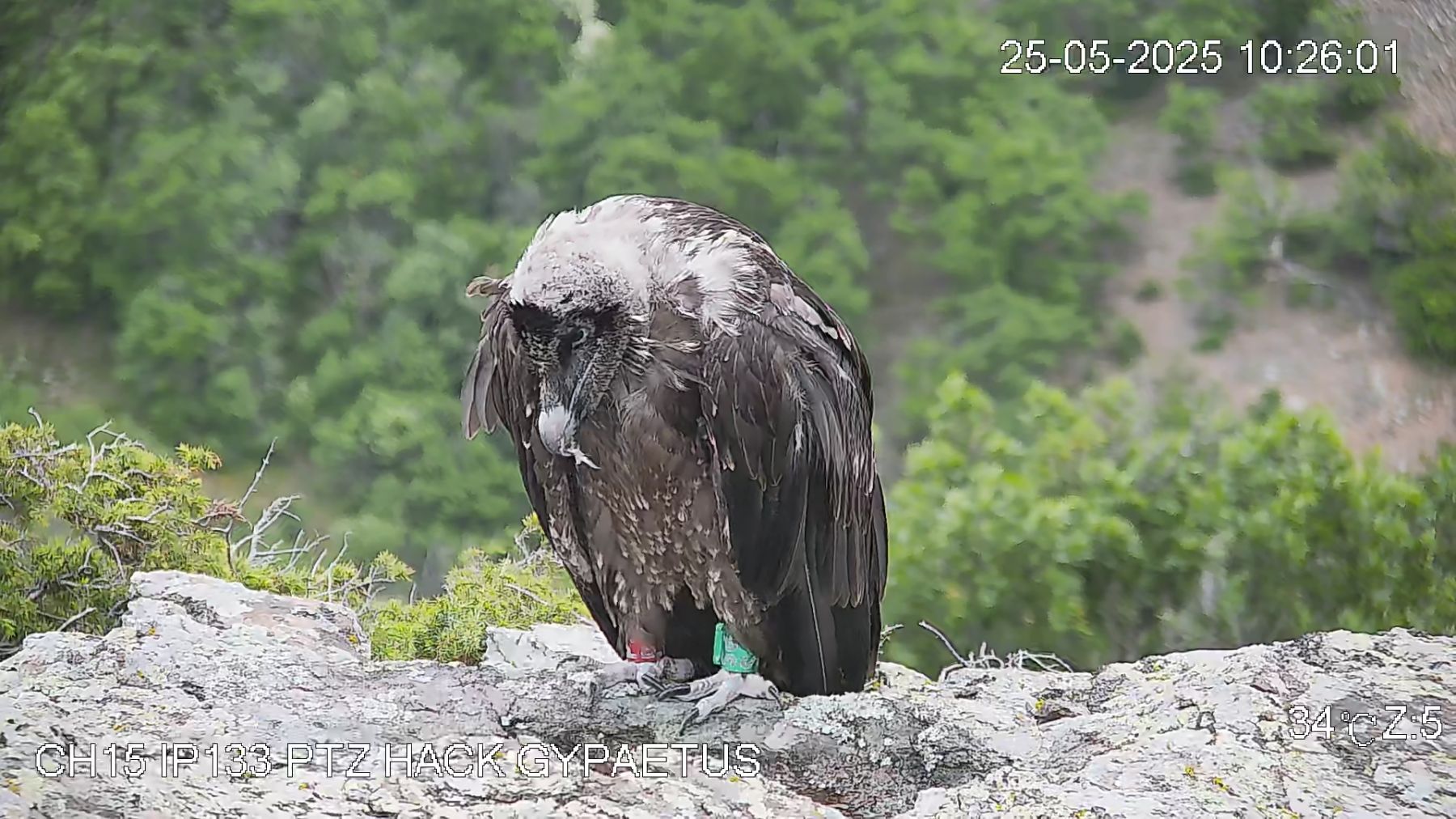
There are around 400 Griffon Vulture breeding pairs and a few Egyptian Vulture pairs that call the Moncayo Massif their home. And now, a Bearded Vulture pair also appeared in the region! Not only that, but the pair attempted to breed for the first time ever during the 2019/20 breeding season. This news is extraordinary for the conservation of the species in the Iberian Peninsula, as this attempt occurred naturally, and represents the first natural recolonization away from the Pyrenees. In Spain the species breeds or has attempted to breed only in the Pyrenees (the stronghold of the species in Europe), in Cazorla/Andalusia, and in Picos de Europa – the latter two from reintroduction projects.
Efforts to facilitate breeding in Moncayo
Last December, the General Directorate of the Natural Environment and Forest Management of the Government of Aragon reported the continued presence of a Bearded Vulture pair in the Moncayo Natural Park that was observed there since spring 2019. That’s when the hope of a natural recolonization and nesting of this species there began. Breeding in Moncayo would be a significant phenomenon as it would be outside of its Pyrenean distribution area. Since then, technicians and the agents from Protección de la Naturaleza (APN) of the Government of Aragon started intensively monitoring the movements and the behaviour of the pair. They also provided legs of lamb as a safe food source, but also for wool availability to stimulate the construction of the nest.
Breeding behaviour observed
The APN agents observed typical breeding behaviour including defending the territory, building the nest and copulating several times. The female did lay at least one egg, which was confirmed by the change in pair behaviour around the nest, the constant relaying between them and incubation. The pair incubated their clutch for 54 days. APN continued their surveillance beyond this period, awaiting the next natural phase, the rearing of the chick. However, after spending more days monitoring the nest, the pair was not transferring food to feed the chick, and they concluded that the nest was empty. In essence, their breeding attempt was unsuccessful.
An anticipated breeding failure
The unsuccessful breeding attempt was not a surprise. On the contrary, it was the most likely outcome. This Bearded Vulture pair is formed by Ezka, a five-year-old female marked in Navarra, and an unmarked adult male from the Pyrenees. For starters, Ezka was way too young. The average age for the first breeding attempts of birds in the Pyrenees is around 8.8 years, while the average age for the first breeding success is 10.3 years. Furthermore, this is the first time this species tried to breed in this habitat, a new breeding ground.
A conservation milestone for the species
Despite the failure, this is a historical milestone for the conservation of the Bearded Vulture in the Iberian Peninsula. This reproductive attempt of the Bearded Vulture, in a natural way and outside the Pyrenean environment, is excellent news for the conservation of the species, even more so if we take into account the limited colonising capacity of this species.
The occupation of this new territory can be understood as a sign of change. This seems to support the idea of the saturation of the population of this species in the Central Pyrenean area
Moncayo seems to be an attractive area for Bearded Vultures as our Maestrazgo reintroduction project (in the Valencia-Aragon-Catalonia border) proved. The project started releasing and translocating Bearded Vultures to Maestrazgo in 2018, and thanks to GPS tags, we manage to monitor and study their movements. The released vultures frequently visit the Teruel Maestrazgo, the Rioja Iberian Mountains or Moncayo itself.
This species tends to seek the proximity of their conspecifics, especially when it comes to feeding, so this breeding attempt can be a sign of hope that they will be attracted to settle in this region and thus naturally expand their distribution outside the Pyrenees.
Source: Government of Aragon
Encouraging dispersal movements beyond the Pyrenees

But why is it important to expand the distribution range of this species by promoting dispersal movements? Well, a wider distribution area of the Pyrenean birds minimises the risk of metapopulation extinction. Further to this, such movements will facilitate the restoration of the species in western Europe, as they promote gene flow and increase genetic diversity within sub-populations. This is one of the primary goals of our very own LIFE GypConnect project in France. This project aims to establish a breeding population of Bearded Vultures in the French Massif Central, as well as in the Pre-Alps, through reintroduction and promoting dispersal movements between the Alps and the Pyrenean populations. Our reintroduction project in the Alps started in the ’70s, and now the Alpine population is established and steadily growing. However, the population in the Alps is still genetically less variable than what you could expect from a population that size (55+ breeding pairs, 350 individuals). So to improve the genetic diversity, the VCF and partners started to invest in this reintroduction project that would link the populations of the Alps and the Pyrenees mountain ranges. The LIFE GypConnect project builds on our decades of experience of breeding, releasing and reintroducing bearded vultures into the wild. Throughout the six-year project, captive-bred birds from our Bearded Vulture Captive Breeding Network and of different genetic backgrounds are being released in the national parks of Grands Causses, Baronnies and Vercors, while minimising threats at the same time. The GypConnect project also is trying to attract birds from the French Pyrenees eastwards, namely through strategically placed small supplementary feeding sites, to try to recolonise new areas – exactly what happened this time in Moncayo, to the west!
Sign up to our newsletter and never miss any vulture news!





